 Many different gemstones can be bought in today's market. There are sapphires, opals, rubies, emeralds and more. What you may not know, however, is that all of these gemstones may not be what they appear. Some gemstones on the market are not natural gemstones, and should be marked by the seller as either "lab-created" or "simulated". You may find that some of these so-called "fake" gemstones may be almost as expensive as their natural counterpoints! This may seem suspicious to you, but actually, it is an accepted practice in the jewelry trade, that is, if the "fake" is actually grown in a laboratory, which makes it quite real in fact.
Many different gemstones can be bought in today's market. There are sapphires, opals, rubies, emeralds and more. What you may not know, however, is that all of these gemstones may not be what they appear. Some gemstones on the market are not natural gemstones, and should be marked by the seller as either "lab-created" or "simulated". You may find that some of these so-called "fake" gemstones may be almost as expensive as their natural counterpoints! This may seem suspicious to you, but actually, it is an accepted practice in the jewelry trade, that is, if the "fake" is actually grown in a laboratory, which makes it quite real in fact.
 There are many different forms of gemstones. There are natural gemstones, which are obviously the most expensive because of their rarity. Then there are natural gemstones, which have been heated to improve their color, and artificial or imitation gemstones, which look like their natural counterparts, but share none of the same properties. There are also man-made stones, also known as "synthetic" or "lab-created" gemstones. These gemstones do share the same physical, chemical, and optical properties as their natural counterparts. These stones also have the same mineral content as their natural counterpoint. Finally, there are gemstones that are partly natural and partly artificial. Here, we are going to discuss lab-created, or "synthetic" gemstones.
There are many different forms of gemstones. There are natural gemstones, which are obviously the most expensive because of their rarity. Then there are natural gemstones, which have been heated to improve their color, and artificial or imitation gemstones, which look like their natural counterparts, but share none of the same properties. There are also man-made stones, also known as "synthetic" or "lab-created" gemstones. These gemstones do share the same physical, chemical, and optical properties as their natural counterparts. These stones also have the same mineral content as their natural counterpoint. Finally, there are gemstones that are partly natural and partly artificial. Here, we are going to discuss lab-created, or "synthetic" gemstones.
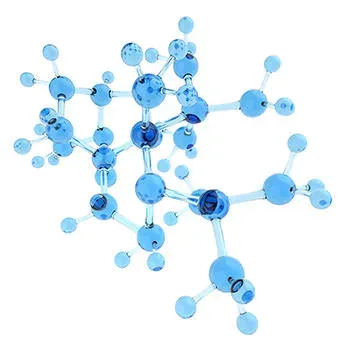 When the word "synthetic" is used, we immediately think of something fake. However, in the jewelry industry, "synthetic" has a very different meaning. In the jewelry trade, a "synthetic," or "lab-created" gemstone is a stone that is grown in a lab, to have the same basic chemical composition, as well as optical and physical properties of the stone that it is being modeled after. These synthetic stones are also sometimes referred to as "flux-grown," "created," or "lab-grown" synthetics. With technological advances, scientists have been able to create environments in their labs, which closely resemble the natural conditions gemstones grow in. Basically, growers recreate the way a gemstone is created in nature; only they speed up the process by a few million years. Under these conditions, it is possible to grow a gemstone that is almost identical to its natural counterpart. In essence, this "synthetic" stone is actually a "real" stone, as it is made up of the same properties as the natural stone. Because these lab-created gems have the same properties as the natural ones, they are sometimes difficult to distinguish from the natural stones in gemological identification tests.
When the word "synthetic" is used, we immediately think of something fake. However, in the jewelry industry, "synthetic" has a very different meaning. In the jewelry trade, a "synthetic," or "lab-created" gemstone is a stone that is grown in a lab, to have the same basic chemical composition, as well as optical and physical properties of the stone that it is being modeled after. These synthetic stones are also sometimes referred to as "flux-grown," "created," or "lab-grown" synthetics. With technological advances, scientists have been able to create environments in their labs, which closely resemble the natural conditions gemstones grow in. Basically, growers recreate the way a gemstone is created in nature; only they speed up the process by a few million years. Under these conditions, it is possible to grow a gemstone that is almost identical to its natural counterpart. In essence, this "synthetic" stone is actually a "real" stone, as it is made up of the same properties as the natural stone. Because these lab-created gems have the same properties as the natural ones, they are sometimes difficult to distinguish from the natural stones in gemological identification tests.
 In the early 1900's, the first lab-created gemstone was grown, in the form of a
In the early 1900's, the first lab-created gemstone was grown, in the form of a ![]() ruby. Since then, there has been a huge market for lab-created gems. In the 1900's however, as the technology was new, prices for lab-created gems were as high as buying the natural forms of the gem. Today however, a lab-created gem is a lot less expensive than a natural gemstone. Synthetic gemstones are a great way for a consumer to own a beautiful piece of jewelry, without emptying his or her bank account. While the cost of growing a synthetic gem may sometimes be extremely high, as it is a difficult process, the price of the synthetic gemstone will never come close to the price of the same sized gem in its natural form.
ruby. Since then, there has been a huge market for lab-created gems. In the 1900's however, as the technology was new, prices for lab-created gems were as high as buying the natural forms of the gem. Today however, a lab-created gem is a lot less expensive than a natural gemstone. Synthetic gemstones are a great way for a consumer to own a beautiful piece of jewelry, without emptying his or her bank account. While the cost of growing a synthetic gem may sometimes be extremely high, as it is a difficult process, the price of the synthetic gemstone will never come close to the price of the same sized gem in its natural form.
 With some stones, creating an artificial version of the stone can sometimes be problematic if the natural version of the stone is usually flawed. This is the case with emeralds, which normally display a number of inclusions in the stone. Before the 1940's, synthetic emeralds were being created that looked so good, that upon a simple glance, it was obvious that they were not natural stones. Today however, with the advancement of technology, growers have figured out how to make the synthetics look more like a real
With some stones, creating an artificial version of the stone can sometimes be problematic if the natural version of the stone is usually flawed. This is the case with emeralds, which normally display a number of inclusions in the stone. Before the 1940's, synthetic emeralds were being created that looked so good, that upon a simple glance, it was obvious that they were not natural stones. Today however, with the advancement of technology, growers have figured out how to make the synthetics look more like a real ![]() emerald, and telling the two apart now proves a lot more difficult.
emerald, and telling the two apart now proves a lot more difficult.
 Here is some information that shows the acceptance of growing lab-created gemstones. According to the guidelines of the US Federal Trade Commission (FTC), "it is unfair or deceptive to use the word 'laboratory grown,' 'laboratory created,' or 'synthetic,' with the name of any natural stone to describe any industry product unless such industry product has essentially the same optical, physical, and chemical properties as the stone named."
Here is some information that shows the acceptance of growing lab-created gemstones. According to the guidelines of the US Federal Trade Commission (FTC), "it is unfair or deceptive to use the word 'laboratory grown,' 'laboratory created,' or 'synthetic,' with the name of any natural stone to describe any industry product unless such industry product has essentially the same optical, physical, and chemical properties as the stone named."
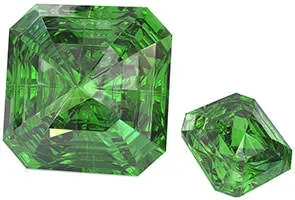 Growing a lab-created gemstone can be a very difficult and complicated practice. The chemical composition of a mineral or gemstone determines the method to be used for its growth in the lab. Growers are asked to replicate numerous different properties the natural stone possesses, including optical or electrical properties, as well as the physical properties the stone can display, for example, various colors or no color, and transparent, translucent or opaque stones. Gemologists are not usually familiar with the techniques and problems facing the crystal grower, though they are quite familiar of course, with the stones themselves.
Growing a lab-created gemstone can be a very difficult and complicated practice. The chemical composition of a mineral or gemstone determines the method to be used for its growth in the lab. Growers are asked to replicate numerous different properties the natural stone possesses, including optical or electrical properties, as well as the physical properties the stone can display, for example, various colors or no color, and transparent, translucent or opaque stones. Gemologists are not usually familiar with the techniques and problems facing the crystal grower, though they are quite familiar of course, with the stones themselves.
 "Imitation" or "simulated" gemstones also do exist, but these are not considered to be as high in quality, as they are not made in the same extremely complicated way as synthetics. Imitations do not share the same optical, chemical, and physical properties as their natural counterparts because they are made to just appear the same as their counterparts. For example, an "imitation" or "simulated"
"Imitation" or "simulated" gemstones also do exist, but these are not considered to be as high in quality, as they are not made in the same extremely complicated way as synthetics. Imitations do not share the same optical, chemical, and physical properties as their natural counterparts because they are made to just appear the same as their counterparts. For example, an "imitation" or "simulated" ![]() ruby is made out of red glass. Therefore, it may look like a ruby, but only in color. Upon inspection, with very simple gemological testing, a gemologist will be able to tell that the specimen is not a natural gemstone. Sometimes, imitation gemstones are even made out of plastic. Imitation gemstones are available in all of the forms of the different colored stones. The most popular simulated gemstone is the cubic zirconia, in both colored and colorless forms.
ruby is made out of red glass. Therefore, it may look like a ruby, but only in color. Upon inspection, with very simple gemological testing, a gemologist will be able to tell that the specimen is not a natural gemstone. Sometimes, imitation gemstones are even made out of plastic. Imitation gemstones are available in all of the forms of the different colored stones. The most popular simulated gemstone is the cubic zirconia, in both colored and colorless forms.
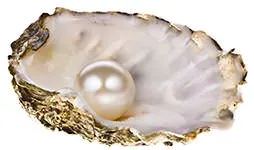 "Cultured" is also a term used as a synonym for "lab-grown," however the two terms are not exactly the same. Culturing pearls is not the same as growing gems, as it is a natural process.
"Cultured" is also a term used as a synonym for "lab-grown," however the two terms are not exactly the same. Culturing pearls is not the same as growing gems, as it is a natural process.
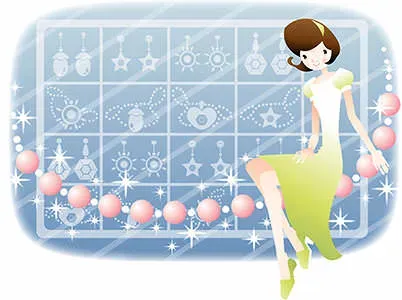 While synthetic and natural stones share the same chemical composition, and overall optical and physical qualities, there are some important differences between the two, which should be noted. Firstly, the rarity of a stone should be considered. Of course, natural stones are rare, and since lab-created gems are grown, they can never be as rare as the natural ones. Furthermore, having a very specific idea of the exact gemstone you are after, and finding it, can be a very challenging experience that may take months to partake in. You may be looking for a particular gemstone in a particular shade of color, in a particular size, clarity and cut. In the end, depending on the rarity of what you are looking for, you may have to compromise on some of your requirements. Lab-created gemstones however, are readily available and come in all different colors, shapes and sizes. There is no lab-created gem that is rare. Therefore, buying a lab-created gemstone instead of buying a natural one may save you a lot of time and energy. Lab-created gemstones also have better colors, and far fewer inclusions. Price is of course, another huge difference between natural and lab-created gemstones. Lab-created gems are always less expensive than their natural counterparts. As the price of natural gemstones goes up, the price of synthetic versions go down, as more are produced and competition increases.
While synthetic and natural stones share the same chemical composition, and overall optical and physical qualities, there are some important differences between the two, which should be noted. Firstly, the rarity of a stone should be considered. Of course, natural stones are rare, and since lab-created gems are grown, they can never be as rare as the natural ones. Furthermore, having a very specific idea of the exact gemstone you are after, and finding it, can be a very challenging experience that may take months to partake in. You may be looking for a particular gemstone in a particular shade of color, in a particular size, clarity and cut. In the end, depending on the rarity of what you are looking for, you may have to compromise on some of your requirements. Lab-created gemstones however, are readily available and come in all different colors, shapes and sizes. There is no lab-created gem that is rare. Therefore, buying a lab-created gemstone instead of buying a natural one may save you a lot of time and energy. Lab-created gemstones also have better colors, and far fewer inclusions. Price is of course, another huge difference between natural and lab-created gemstones. Lab-created gems are always less expensive than their natural counterparts. As the price of natural gemstones goes up, the price of synthetic versions go down, as more are produced and competition increases.
 The only quality a lab-created gemstone does not possess, that a natural gemstones does, is emotional value. Natural gemstones have a great history, and the far away places where they are found, creates a great appreciation for them, as well as a great emotional attachment.
The only quality a lab-created gemstone does not possess, that a natural gemstones does, is emotional value. Natural gemstones have a great history, and the far away places where they are found, creates a great appreciation for them, as well as a great emotional attachment.
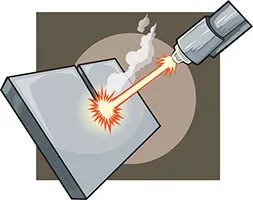 Lab-created gemstones are also beneficial in other commercial industries. For example, they are used in machinery, communication devices, jets and lasers. They are mostly appreciated however, by jewelry owners, and this technology offers those who may not have bundles of money, an affordable opportunity to own beautiful and attractive gemstone jewelry.
Lab-created gemstones are also beneficial in other commercial industries. For example, they are used in machinery, communication devices, jets and lasers. They are mostly appreciated however, by jewelry owners, and this technology offers those who may not have bundles of money, an affordable opportunity to own beautiful and attractive gemstone jewelry.